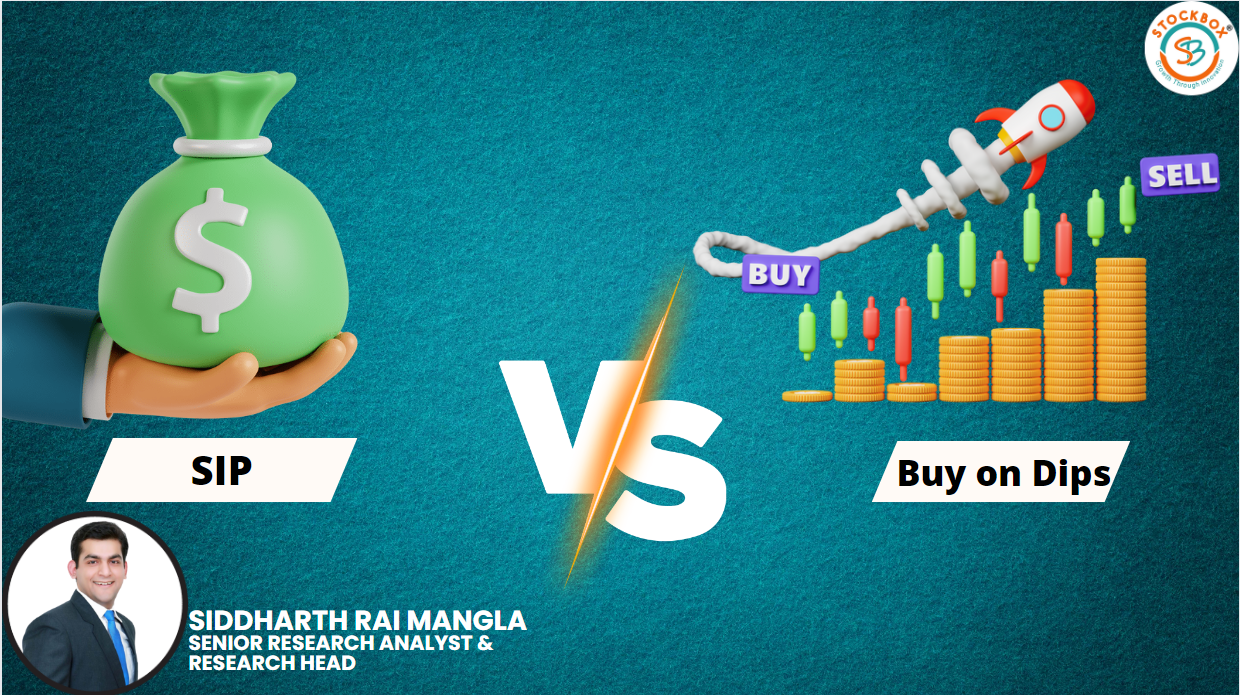Investing in the stock market is akin to riding a roller coaster; it has its ups and downs. As an investor, you’re often confronted with the dilemma of whether to seize opportunities during market downturns through the “buy on dips” strategy or take a more systematic approach with Systematic Investment Plans (SIP). Both approaches have their merits and demerits, and understanding them is crucial for making informed investment decisions.
Buy on Dips: The Tactical Advantage
The “buy on dips” strategy revolves around capitalizing on market downturns to purchase stocks at a lower cost. Advocates of this strategy believe in the art of market timing, aiming to buy when stock prices experience a temporary dip, assuming they will rebound in the future. This strategy demands a keen eye on market trends, economic indicators, and a willingness to take calculated risks.
One of the key advantages of the “buy on dips” strategy is the potential for higher returns in a shorter time frame. By strategically entering the market during downturns, investors can benefit from the subsequent recovery and capitalize on undervalued stocks. However, the challenge lies in accurately predicting market movements, a task that even seasoned investors find elusive.
SIP: The Systematic Approach
Systematic Investment Plans (SIP) take a more disciplined and systematic approach to investing. Instead of trying to time the market, investors commit to regular, fixed investments at predefined intervals. This approach promotes a steady and disciplined investment strategy, which is particularly beneficial for long-term wealth creation.
SIP offers the advantage of rupee cost averaging. When markets are high, your fixed investment buys fewer units, and when markets are low, you buy more units. Over time, this can result in a lower average cost per unit, mitigating the impact of market volatility. SIP is an ideal choice for investors who prefer a more hands-off and less time-consuming approach, as it doesn’t require constant monitoring of market fluctuations.
Making an Informed Choice
The decision between “buy on dips” and SIP ultimately depends on individual preferences, risk tolerance, and investment goals.
Risk Appetite: If you have a higher risk appetite and are comfortable with market volatility, “buy on dips” might be a suitable strategy. However, if you prefer a more stable and predictable approach, SIP could be the better choice.
Time Horizon: Consider your investment horizon. “Buy on dips” might be more appealing for short-term gains, while SIP is well-suited for long-term wealth creation, allowing the power of compounding to work in your favor.
Market Knowledge: Successfully executing the “buy on dips” strategy requires a deep understanding of market trends. If you lack the time or knowledge for in-depth market analysis, SIP offers a simpler and more accessible option.
Conclusion
In the grand tapestry of investment strategies, both “buy on dips” and SIP have their place. The key lies in aligning your choice with your financial goals, risk tolerance, and investment horizon. It’s essential to remember that the best strategy is often a diversified one. Combining both approaches can offer the benefits of tactical entry points and the stability of disciplined, long-term investing.
Whether you choose to ride the market waves with precision or sail steadily through the currents of time, the ultimate success of your investment journey lies in thoughtful consideration and a well-defined strategy that resonates with your financial objectives.

